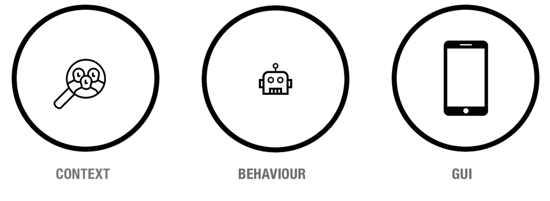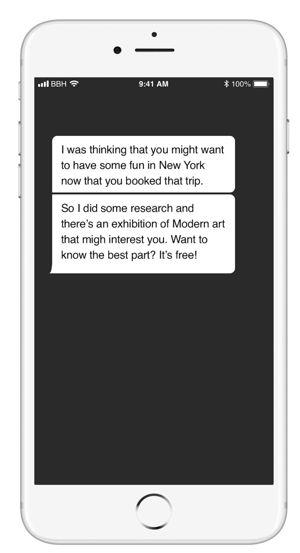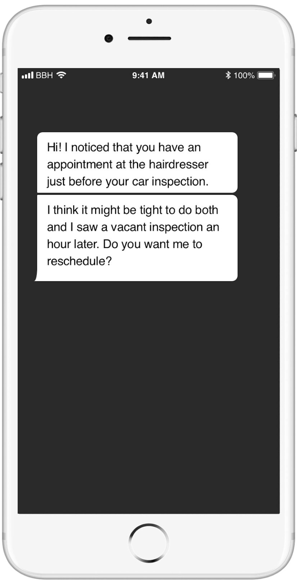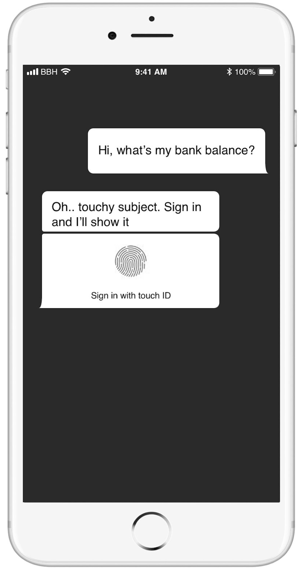There’s been much discussion concerning the importance of building trust in business, both towards customers and in the internal relationships at work. As a business, you probably operate in a digital landscape where there’s a lot of competition between services, and trust is a key factor in creating a competitive advantage. In recent years, the popularity of chatbots has exploded due to many promising advantages for companies and users. Trust has been shown to have a positive effect on sales, profit and turnover. Creating a foundation of trust isn’t only beneficial to your brand, but to your revenue as well.
So, what’s the best way of conveying trust through chatbots? As it turns out, I’ve already looked into how to convey trust through a chatbot interface. Here’s how!
Trust
What is trust exactly? It’s explained in many different ways and there’s no universal definition of the word. Trust is explained to be something cognitive, emotional or moral, or a combination of the three. It’s an ability we've had for a long time, which is built into our genes and on a biological level controlled by the brain chemical oxytocin. We humans are not actively thinking about how much we trust someone, it’s rather a 'gut feeling' that is created as a result of several different factors. I’ve summarised these factors into four different categories.
The four factors of trust
Chances of forming a relationship built on trust with humans will increase if you apply these four factors.
1. Show that you care. People who care for others are easier to trust because it’s in their interest to want what’s best for those they care about.
2. Create a feeling of belonging. The group-feeling is very powerful. When both parties have the same goal, common values, or similar personality traits and backgrounds. They will establish a good basis for building trust.
3. Convey competent and predictable. Competence is essential when trusting someone. If one does not believe that the other is capable enough to fulfil the responsibility given to them, then it will be difficult to trust that person with the assignment. After you’ve convinced the trust giver of your competence, you also have to show that you are predictable, and actually, deliver.
4. Convey safety. Feeling a sense of security, both in the surrounding and towards an object or person, will shape the trust decision.
Chatbots
CUIs are interfaces where the user interacts similarly in a conversation with another human, either in writing or through speech. CUIs exploded in popularity around 2016 due to technological advancements in natural language understanding. Building chatbots that interact through writing have become an attractive forum for businesses since people spend a lot of their time on their phone using messaging apps. And this is where companies want to be - where the users are.
Things to consider when designing chatbots
How a user perceives a chatbot is a result of multiple different factors.
For example, every chatbot is going to exist in a particular context. Will it be used for buying plane tickets or function like customer support, will it be used on the web or on the phone, will it be used in groups or alone? Think: where, when, how, what, why and who.
Another thing that we should take into account is the relationship between the user and chatbot, both how it is today and how it will evolve. We can consider the bot as an individual who interacts with humans, which means that the bot’s ‘personality traits’ will affect the experience. Surely the majority of us would like to have a pleasant and smooth discussion with someone who’s friendly, respectful and interested in what we have to say.
In addition to this, we should not forget the importance of the graphical user interface. A text based chatbot is a hybrid between a Conversational User Interface and a Graphical User Interface so it’s important to reflect over how the user should interact with the GUI.

Guidelines for designing trust in CUIs
So, what should you take into account when designing a trustworthy chatbot? Here are some tips for bot-builders who wants to create an excellent base for trust. I have grouped them by the four factors of trust.
1. Show that you care
● Respect the user’s time
Don’t add unnecessary fluff to the conversation.
● Be friendly
Caring means to never have a judgmental approach, to always be respectful, and to be positive toward your users.
● Respect the phase of the relationship
Do not be too personal too quickly. The trust pyramid shows that trust is something that one will establish over time, and every relationship evolves through different zones.
● Give the user a way to quickly access important elements
Use persistent elements for functions that users want to reach at all times, this creates consistency and shows that you have the user in mind.
● Listen to your user
Do not request input from the user and then disregard it. If you ask for it, use it. By listening you’re showing that you value their input which is an important factor in creating a pleasant conversation.
● Remember your conversations
A foundation of being competent and a proof that you’ve listened to the user is to remember what’s been said. Let the user be able to refer to earlier dialogues.
2. Create a feeling of belonging
● Enhance similarities
People like those who they can relate to even more than people who have authority, and it’s also shown that those who have similar views will mirror each others behaviour. So use the right discourse with your user to enhance similarities between you.
● Customize
Make the experience personalized for all users.
● Let the users behave as humans
We want a conversation that feels natural. This is done by letting users behave similar to human conversations, so strive towards understanding non verbal input and other things humans will use in chats with each other.
3. Convey competence and predictability
● Set the right tonality
As each touch point should be on-brand in order to strengthen the brand experience, so should your CUI. A strong brand also enhances trust and the feeling of predictability
● Observe your context
Control the entire journey by accessing such data that can make you understand the users point of view.
● Know your limits
Aim high but focus on quality instead of quantity for a better experience. A bot can, for instance, have open answers where users have full access to the keyboard and can write anything to the bot. Or it can have closed answers, where answering options are limited to a few. It can be tempting to go for open answers but I would recommend to only use open answers if you are sure that you can handle them.
● Find the need
One component of showing understanding is to figure out the core issue you should solve. The users may not always be able to articulate their core needs, but try to figure out the one problem you need to solve and do that well in order to add value to the user.
● Communicate your purpose and abilities
Use the on-boarding in order to set expectations at the right level.
4. Convey safety
● Take safety seriously
If you ask for sensitive data, make it clear that their privacy is protected. Security is hugely important in order to convince users to trust you. Here are some things to consider security wise when building your chatbot.
● Be transparent
‘Tell’ users that you are a bot. Make it obvious either through profile picture, name or by presenting yourself as a bot.
In order to figure out how to build trust in bots we need to go back to basics and see the psychology in what creates trust. We, as humans work the same regardless of the medium. When it comes to conversational UI’s, trust is important in order to build an emotional connection with the user. Have in mind though that bots have many advantages, but they will not always be the right solution to your problems. If creating a bot will match your business needs then these guidelines will hopefully help you create that desirable connection that puts your business in front of the competition.



